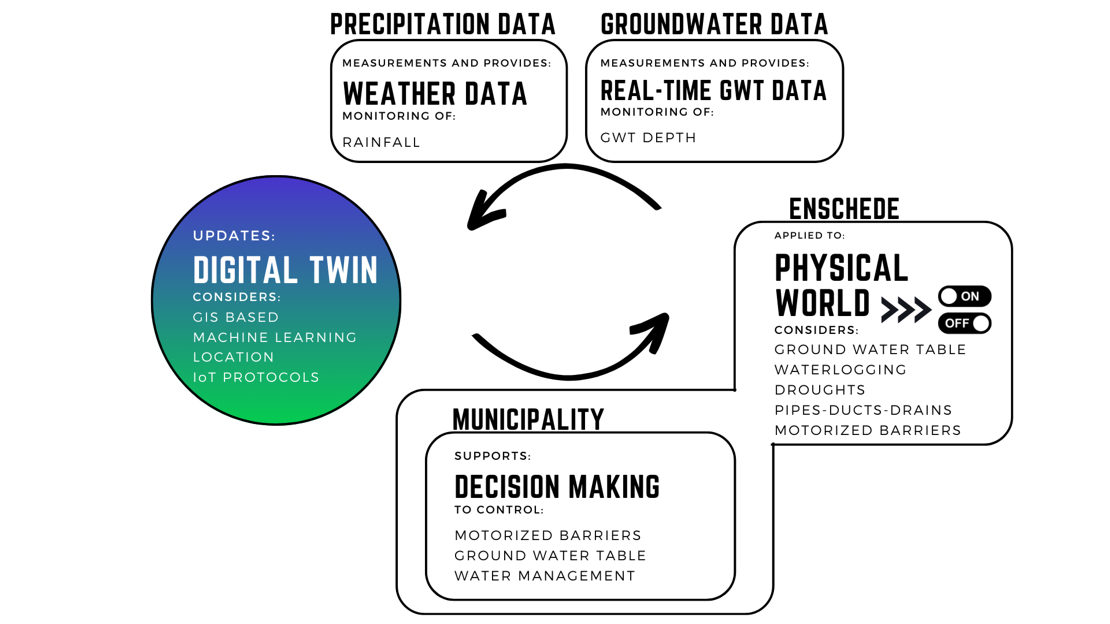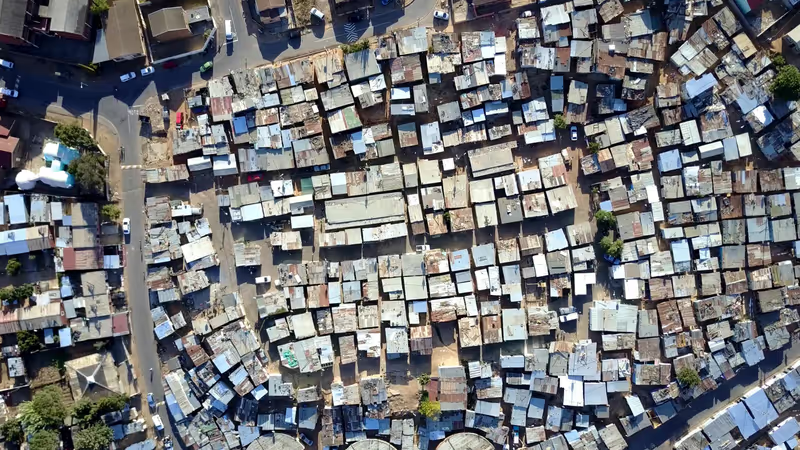| Student: | L. R. Morales Ortega MSc |
|---|---|
| Timeline: | December 2023 - 30 November 2025 |
In July 2021, Western Europe faced catastrophic floods caused by extreme rainfall, resulting in over 200 fatalities and extensive infrastructure damage. A comprehensive study, shared by the Royal Netherlands Meteorological Institute (KNMI) on their official website, attributed these events to human-induced climate changes. Moreover, under the current climate conditions, according to this study, such extreme rainfall can be expected approximately once every 400 years at any location within the larger Western European region. However, the likelihood of such events occurring today, compared to a 1.2°C cooler climate, has increased by a factor of 1.2–9. Therefore, climate models further predict intensified rainfall events in the future. doi:https://doi.org/10.1007/s10584-023-03502-7
In The Netherlands, the impact of more frequent and intense rainfall is strongly felt. Moreover, urban development significantly alters environmental conditions, affecting rainfall management. Municipalities across the country have to deal with the challenge of measuring, understanding, and finding solutions to tougher fluctuating rainfall and groundwater levels, particularly in urban areas. While traditional methods like pumps are employed for dewatering during wet seasons, extreme weather events such as droughts and heavy rainfall demand a more proactive approach to groundwater control. The goal is to prevent damage to underground assets, including tree roots, basements, pipes and building foundations.
Digital Twins (DTs) emerge as a transformative solution. By dynamically managing groundwater based on real-time data and weather events, DTs offer a proactive approach. Although, previous studies have demonstrated the effectiveness of DTs in monitoring and controlling civil engineering assets, such as bridges and water pumps. The seamless integration of real-time data, expert knowledge, and physical or machine learning models within a digital twin framework remains an area for further exploration. Consequently, our study focuses on designing and testing a groundwater DT. Real-time sensor readings and rainfall forecasts feed into a machine-learning model, predicting groundwater fluctuations. Visualising outcomes in a 2D Geographic Information System (GIS) software, we aim to actuate Real-Time Controlled (RTC) barriers through an Internet of Things (IoT) connectivity. These barriers will enable smart water draining and retention, adapting to weather conditions and forecasts. Whether preparing the ground for dry or over-saturated seasons, this approach aims to enhance our understanding of historical, current, and predictable groundwater dynamics.
Additionally, we seek to validate whether data fusion and prediction can empower proactive control of groundwater table levels. Leveraging DT technology, water management professionals can assess barrier control scenarios more effectively. Furthermore, we explore whether digital twin outcomes trigger collective assessments of groundwater dewatering and retainability in various scenarios. Our findings will aim to support dynamic groundwater management and empower a collective of experts in municipal water management. Additionally, the Glanebeek River area situated in the City of Enschede, The Netherlands experiences persistent high water and groundwater levels, and despite the availability of machine learning and artificial intelligence technologies, their application for predictive and preventive groundwater control remains underutilised. The dynamic nature of groundwater levels, influenced by seasonal variations, adds complexity. To bridge this gap. Therefore, we propose a smart drainage system using motorised barriers that can be installed in existing and future manholes. These barriers adjust their height in real-time, responding to changes in groundwater levels and predictions made utilising machine learning techniques. Our case study, conducted in the city of Enschede, integrates Geographic Information System (GIS) software as a base and an actuator manager system. By addressing high water levels and groundwater issues, this smart drainage system aims to assist urban planners and water experts to making decisions to enhance urban resilience and sustainable water management.
Scope:
A Digital Twin thus combines elements of visualisation, data integration, and prediction with real-time actuation of the physical system to ensure cohesive functionality. Therefore, the design of the Digital Twin involves several essential building blocks to ensure cohesive functionality. Firstly, successful data collection from sensors and meteorological sources is crucial, as this forms the foundation for all subsequent processes. Subsequently, selecting an appropriate user interface environment is necessary to facilitate both the visualisation and analysis of this data. Furthermore, developing a platform that connects the virtual representation model, prediction models, and the physical actuators of the DT is vital for creating an integrated system. The DT must also be able to effect changes in the real world through the integration of Internet of Things applications.
To achieve these objectives, the project will focus on several key areas. Firstly, developing a user-friendly interface in GIS-based software is essential. This interface will provide a digital 2D representation of the study area, specifically highlighting the GWT levels and the interconnected network of pipes and manholes in the case area. This will enable municipal staff to monitor and analyse GWT fluctuations effectively, facilitating informed decision-making regarding GWT retention and drainage. Moreover, the project will implement prediction models, including Machine Learning, to forecast groundwater depth. By using historical data to train the prediction models, including Support Vector Machines (SVM), Neural Networks (NN), and physics models like Menyanthes, Pastas, and SWAP, the project aims to identify the most effective forecasting approach. In addition, real-time response mechanisms will be implemented to control actuators based on predictions about the fluctuation of the GWT. This includes the implementation of an in-situ test environment that can respond based on IoT capabilities. Determining the interactions between the physical system and predictions involves setting up thresholds for triggering actions, which may be possible through webhook functions.
Finally, the project's impact on the surrounding area where the in situ prototype will be installed will be evaluated using quantitative measures. By focusing on these interconnected elements, the project aims to create a comprehensive and effective Digital Twin framework for urban controlled drainage systems.







